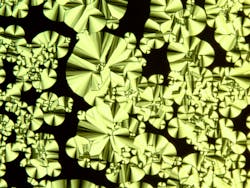University of Tokyo and RIKEN researchers perform computational logic with ultraviolet light
For the first time, researchers performed computational logic operations with a liquid-crystal-based chemical device using electric fields and ultraviolet light.1 The device and the methods used open up research possibilities that include low-power, high-performance computer chips.
Keiichi Yano, Yoshimitsu Itoh, and Takuzo Aida from the Department of Chemistry and Biotechnology at the University of Tokyo and their team developed a device which demonstrates functions useful to computation. Conventional computers use electric charge to represent binary digits, but the researchers’ device uses electric fields and UV light, which could allow for lower power operation and create less heat than logic based on electric charge.
The device is also vastly different from current semiconductor chips, as it is chemical in nature; it's this property that gives rise to its potential usefulness in computation. In addition to the power and heat benefit, this device could be manufactured cheaply and easily. The device has disk and rod-shaped molecules that self-assemble into spiral staircase-like shapes called columnar liquid crystals (CLCs) under the right conditions.
Before a logic operation begins, the researchers sandwich a sample of CLCs between two glass plates covered in electrodes. Polarized light passes through the sample to a detector on the other side. In the sample's default state, the CLCs exist in a randomly oriented state that allows the light to reach the detector. When either the electric field or the UV light is individually switched on then off, the detected output remains the same. But when the electric field and UV light are switched on together and then off again after about a second, the CLCs line up in a way that blocks the detector from the light.
If the output states of light and dark, and the input states of the electric field and UV light, are all assigned binary digits to identify them, then the process has effectively performed a logical AND function—all inputs to the function must be "1" for the output to be "1."
"The AND function is one of several fundamental logic functions, but the most important one for computation is the NOT-AND or NAND function," says Yano. "This is one of several areas for further research. We also wish to increase the speed and density of the CLCs to make them more practical for use.”
Source: https://www.u-tokyo.ac.jp/focus/en/press/z0508_00025.html
REFERENCE:
1. Keiichi Yano et al., Science (2019); doi:10.1126/science.aan1019.

John Wallace | Senior Technical Editor (1998-2022)
John Wallace was with Laser Focus World for nearly 25 years, retiring in late June 2022. He obtained a bachelor's degree in mechanical engineering and physics at Rutgers University and a master's in optical engineering at the University of Rochester. Before becoming an editor, John worked as an engineer at RCA, Exxon, Eastman Kodak, and GCA Corporation.
